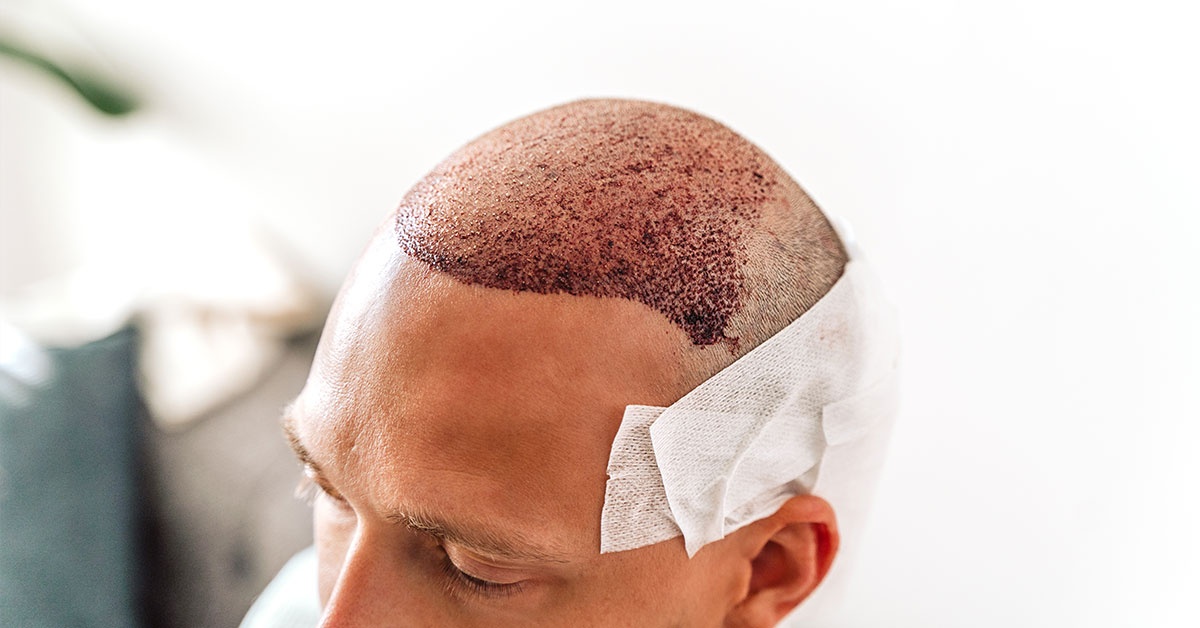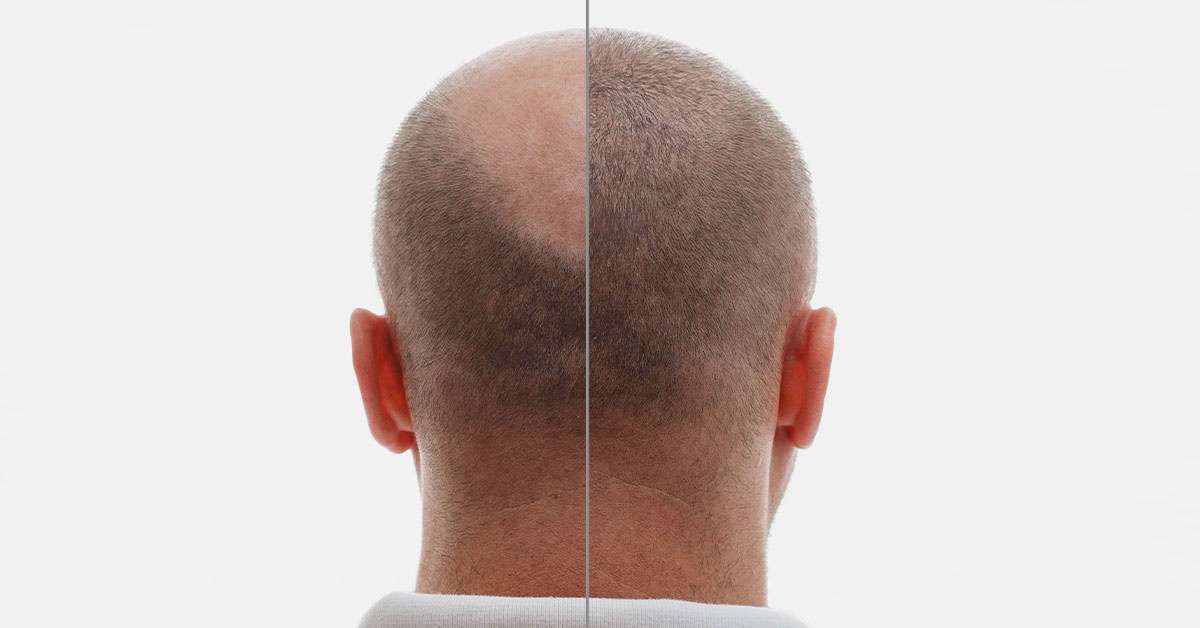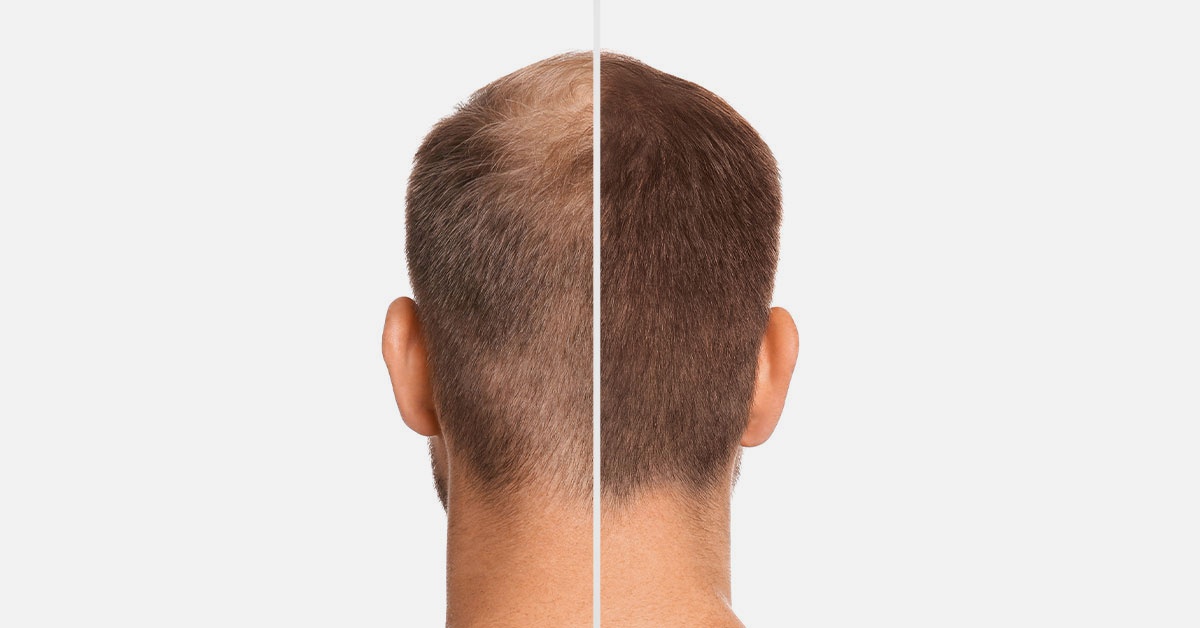Timeline of Hair Transplant
Understanding the timeline of hair transplant recovery helps manage expectations and achieve the best results available. In this article, we'll delve into the various stages of hair transplant and provide valuable insights for those interested in the process.
An overview of FUE hair transplant
Follicular Unit Extraction (FUE) is the most popular hair transplant method following the old strip (FUT) technique. FUE involves harvesting individual hair follicles from a donor area and transplanting them to the thinning or balding regions.
FUE is known for its minimally invasive approach and natural-looking results. Enhanced FUE variations, like Sapphire FUE, offer even less pain and minimal scarring. If you’d like to read more about the popular hair transplant techniques, take a look at our FUE Hair Transplant page.
Now, let's explore the timeline of a typical hair transplant journey.
FUE Hair Transplant Recovery Timeline

Immediate postoperative period (1-7 days)
During the first week following the FUE hair transplant, the healing process begins. Small scabs form around the transplanted hair follicles, protecting the grafts while they adjust to their new location. Itchiness is expected during this time, be alert about accidental scratching. Tapping near the itchy area lightly with your fingertips or spraying water helps.
It's normal for the scalp to appear red and slightly swollen during this period. Avoiding long durations on foot and cutting salt would help with the swelling.
Following post-operative care guidelines and keeping in touch with your specialist is vital, especially during the first 2 weeks. Refraining from strenuous activities is also advised during this period.
Over-the-counter medication often alleviates pain. But, always contact your specialist first for severe pain or discomfort.
Welfare Abroad patients can relax, as we provide crucial medications for early recovery and monitor progress through frequent online check-ins with our aftercare team.

Early recovery (1-3 months)
Hair Shedding Phase (First Month)
During the first month, patients may experience hair shedding. This is a typical aspect of the recovery process, as the transplanted hairs pave the way for fresh, healthy growth. There are also cases where shedding doesn’t happen at all, and that’s also ok.
Lastly, some patients experience shock hair loss due to various reasons, if you see any signs, contact your hair specialist.
Permanent Hair Growth (Starting from 3rd Month)
From the third month onward, the transplanted hair follicles begin to grow permanently. Over time, patients will see increasingly fuller and more natural-looking results.
It’s essential to support this growth as the newly planted hair follicles will initially be weak. Keeping your vitamin, mineral, and hormone levels in check is advised.

Long-term recovery (4-12-18 months)
Continued Hair Growth (4-12 months)
Progressing through the FUE Hair Transplant Timeline, patients will see increased growth from month four. Since healing rates vary, it's difficult to provide exact percentages, but over half of the transplanted follicles should grow by month seven.
By the 12-month mark, final results for the frontal and middle areas typically become evident.
Achieving final results (12-18 months)
When patients reach 12-18 months, the outcome of their FUE hair transplant, including the crown, should be visible, blending smoothly with surrounding hair.
Due to its position at the body's top, the crown area has a lower average blood flow rate. This makes access to nutrients carried by the blood flow difficult for the hair follicles. Consequently, hair transplant success rates may be reduced and recovery times extended up to 18 months.

Factors affecting recovery time & tips for a smooth recovery after hair transplant
Individual health and healing abilities play a significant role in hair transplant recovery. It's crucial to maintain regular contact with your hair specialist or aftercare team, such as the Welfare Abroad Care Team, to ensure a smooth recovery.
Following post-operative care instructions is important for achieving the best results. Welfare Abroad provides written, verbal, and visual guidance for all patients following their hair loss treatment.
To alleviate early discomfort after a hair transplant, patients can try the following tips:
- Keep the head elevated, especially when sleeping, to reduce swelling.
- Use prescribed pain medication and topical solutions as instructed.
- Avoid strenuous activities and follow any restrictions provided by your specialist.
For long-term recovery, consider the following tips:
- Monitor deficiencies, stress levels, and physical conditions that could affect hair growth.
- Consult your hair specialist about beneficial vitamins or supplements, such as biotin, folic acid, or vitamin D.
- Maintain a healthy lifestyle by exercising regularly and eating a balanced diet rich in nutrients that promote hair growth, like protein, iron, and omega-3 fatty acids.
By following these aftercare tips and keeping in touch with your hair specialist or aftercare team, patients can maximize their chances of a successful hair transplant and enjoy a restored natural-looking hairline.

In summary, understanding the FUE Hair Transplant Timeline is crucial for managing expectations and ensuring a successful hair transplant journey. The timeline consists of immediate post-operative care, short-term recovery, and long-term recovery, each with its unique challenges and milestones.
Turkey has become a popular destination for hair transplant surgery due to its affordable pricing, high-quality care, and experienced specialists.
Welfare Abroad, a registered company in the UK for over a decade, can help eliminate many trust issues associated with medical travel. We are dedicated to helping patients find the best specialist for their hair recovery journey and offer affordable, hassle-free medical travel packages. Our packages include airport pick-up and drop-off, hotel stay, and a patient host to accompany patients during hospital visits.
If you're considering a hair transplant, know that Welfare Abroad is here to support you every step of the way. To get started, simply contact us and share your related photos to receive a free treatment plan tailored to your needs.
Related Articles About Hair Transplant
Learn more about the procedure
